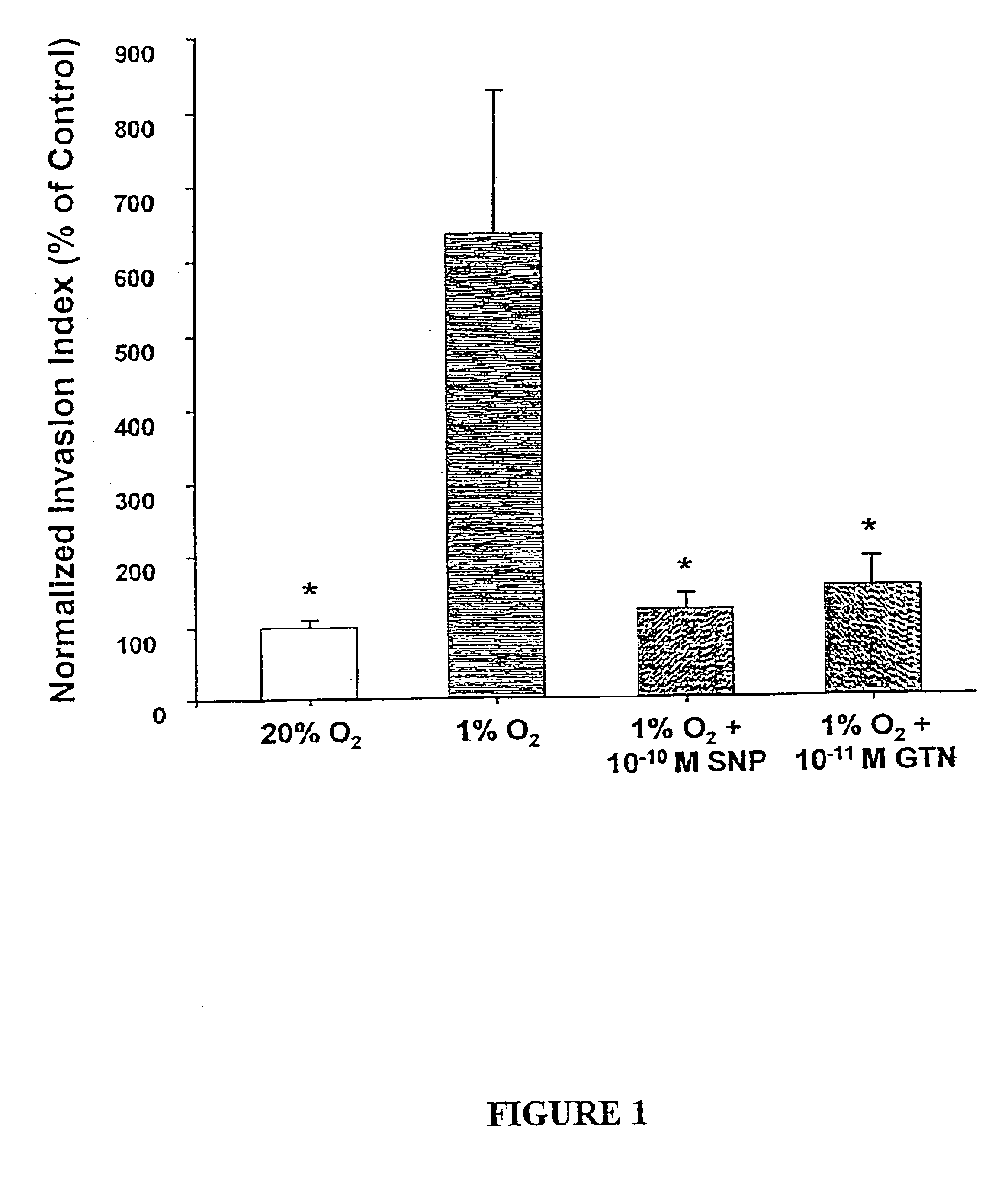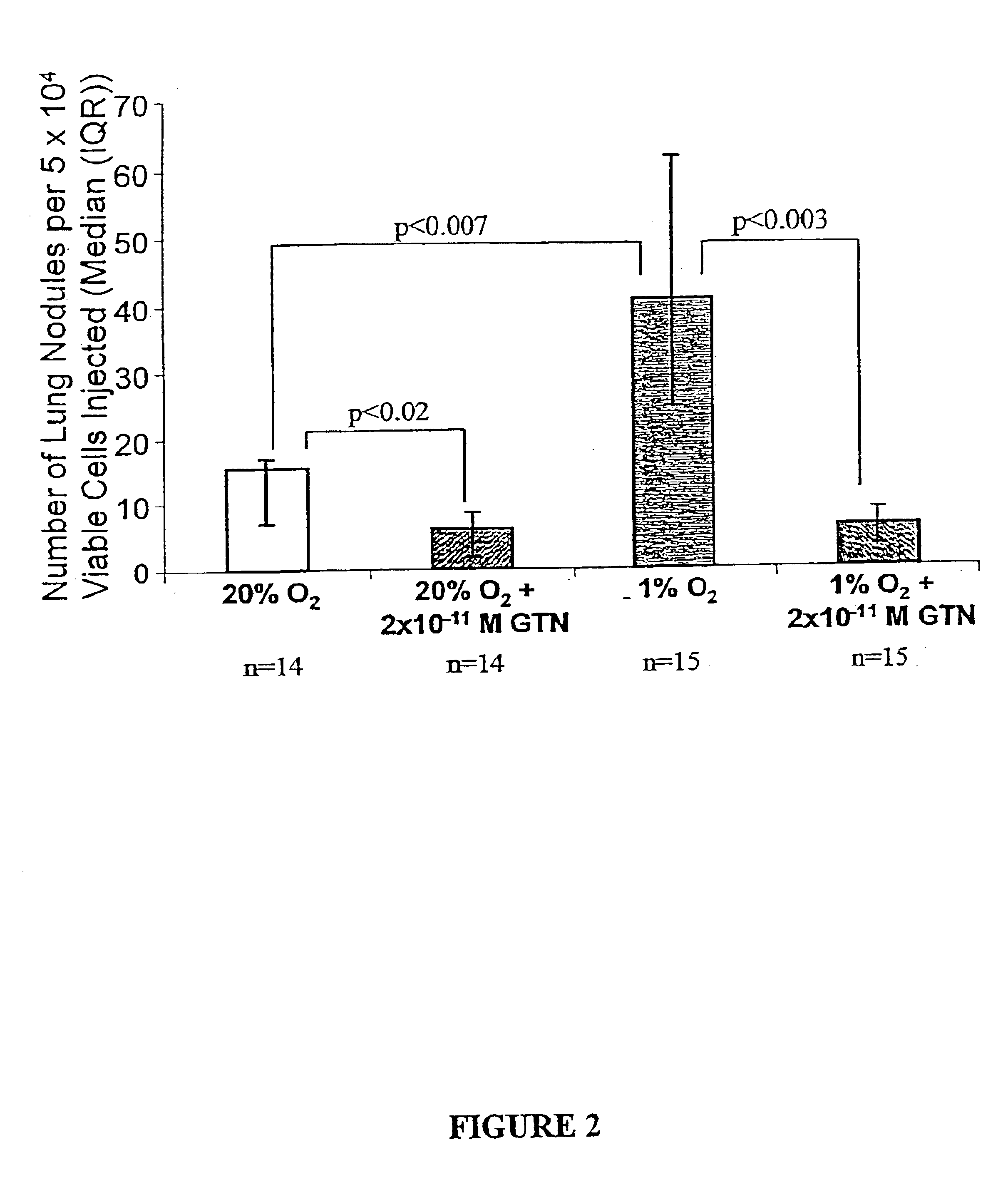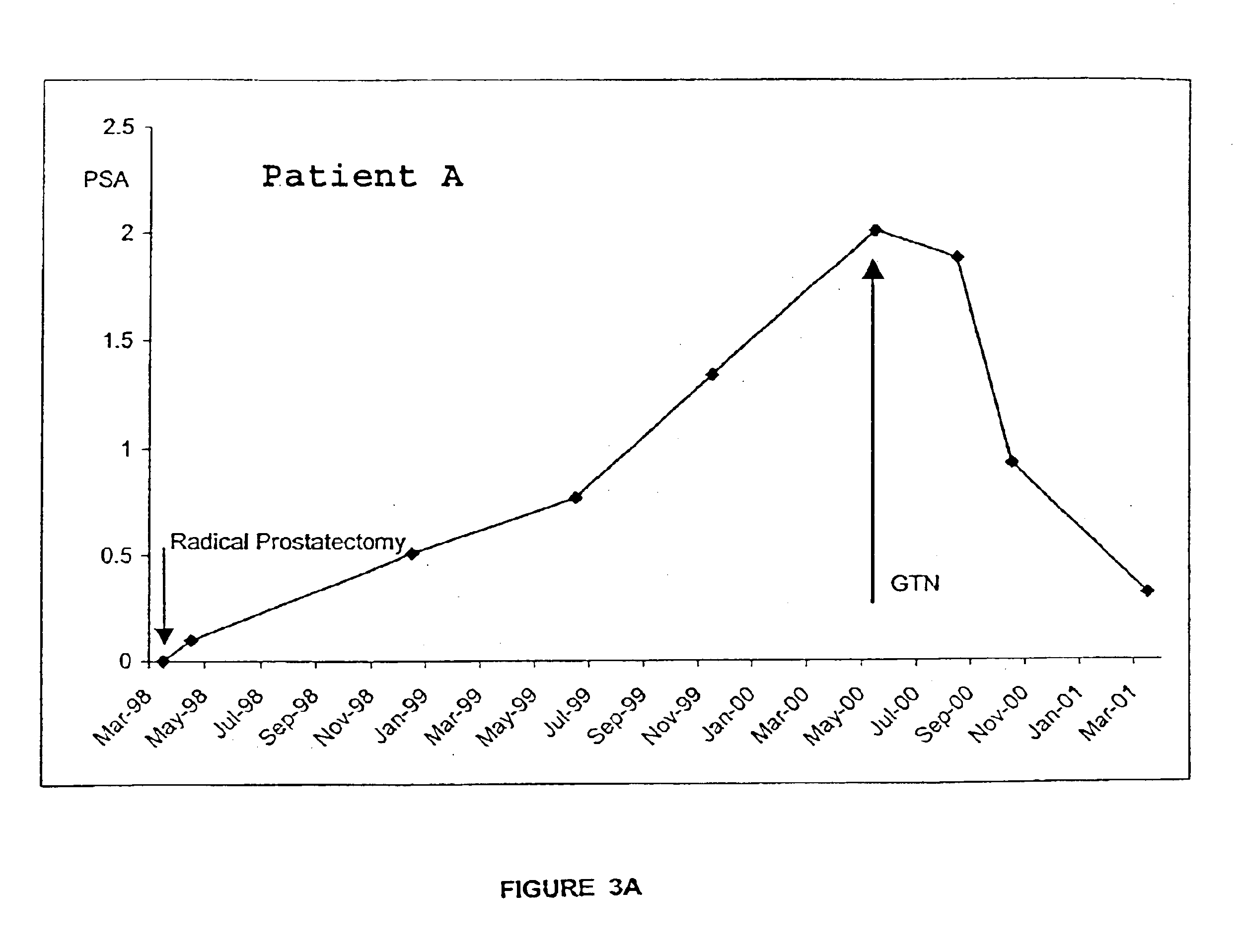Formulations and methods of using nitric oxide mimetics against a malignant cell phenotype
a technology of nitric oxide and mimetics, which is applied in the direction of biocide, drug composition, peptide/protein ingredients, etc., can solve the problems of cytostasis and apoptosis, and achieve the effect of preventing the malignant cell phenotyp
- Summary
- Abstract
- Description
- Claims
- Application Information
AI Technical Summary
Benefits of technology
Problems solved by technology
Method used
Image
Examples
example 1
Materials
[0070]Tissue culture medium (RPMI 1640) and fetal bovine serum (FBS) were purchased from Gibco BRL (Grand Island, N.Y.). Hypoxic conditions were generated using airtight chambers from BellCo Biotechnology (Vineland, N.J.). GTN was obtained as a solution (TRIDIL, 5 mg ml−1 or 2.22 M) in ethanol, propylene glycol and water (1:1:1.33) from DuPont Pharmaceuticals (Scarborough, ON). Sodium nitroprusside (SNP) was purchased from Sigma Chemical Co. (St. Louis, Mo.). RNA extractions were conducted using a PURESCRIPT RNA isolation kit from Gentra Systems (Minneapolis, Minn.). For the Northern blot analyses, the nylon membranes used for the RNA transfers were purchased from Micron Separations, Inc. (Westboro, Mass.); the uPAR and PAI-1 cDNA probes were cloned in a Bluescript plasmid vector; the [32P]-dCTP and the Reflection NEF film were purchased from Dupont / New England Nuclear (Mississauga, ON); and the oligolabelling kit was obtained from Pharmacia Biotech (Piscataway, N.J.). For ...
example 2
Cells
[0071]The HTR-8 / SVneo invasive trophoblast cell line and the MDA-MB-231 metastatic breast carcinoma cell line were used in these experiments. Both the HTR-8 / SVneo and the MDA-MB-231 cells were cultured in RPMI-1640 medium supplemented with 5% FBS.
[0072]The HTR-8 / SVneo cell line was obtained from explant cultures of human first trimester placenta and immortalized by transfection with a cDNA construct encoding the SVneo large T antigen. These cells have been previously characterized and have been maintained in culture for over 130 passages in RPMI 1640 medium supplemented with 5% FBS. They exhibit a high proliferation index and share various phenotypic similarities with the non-transfected parent HTR-8 cells such as in vitro invasive ability and lack of tumorigenicity in nude mice.
[0073]The MDA-MB-231 cell line was initially isolated in 1973 from the pleural effusion of a 51-year-old breast cancer patient (Callieau et al. J. Nat. Cancer Inst. 1974 53:661-674).
example 3
Hypoxic Cell Culture Conditions
[0074]Cells were placed in an airtight chamber and were flushed with a gas mixture containing 5% CO2:95% N2 until the oxygen concentration was 0%, as read by a Minioxl Oxygen Analyzer (Catalyst Research Corp., Owing Mills, Md.). The cells were then incubated at 37° C. Within the first 2 hours of incubation, the oxygen level in the chambers had equilibrated to approximately 1%, and remained at this level for the remainder of the incubation period.
[0075]Alternatively, cells were placed in a chamber in which atmospheric O2 levels were maintained by a PRO-OX O2 regulator (Reming Bioinstruments, Redfield, N.Y.).
PUM
| Property | Measurement | Unit |
|---|---|---|
| body weight | aaaaa | aaaaa |
| diameter | aaaaa | aaaaa |
| diameter | aaaaa | aaaaa |
Abstract
Description
Claims
Application Information
 Login to View More
Login to View More - R&D
- Intellectual Property
- Life Sciences
- Materials
- Tech Scout
- Unparalleled Data Quality
- Higher Quality Content
- 60% Fewer Hallucinations
Browse by: Latest US Patents, China's latest patents, Technical Efficacy Thesaurus, Application Domain, Technology Topic, Popular Technical Reports.
© 2025 PatSnap. All rights reserved.Legal|Privacy policy|Modern Slavery Act Transparency Statement|Sitemap|About US| Contact US: help@patsnap.com



